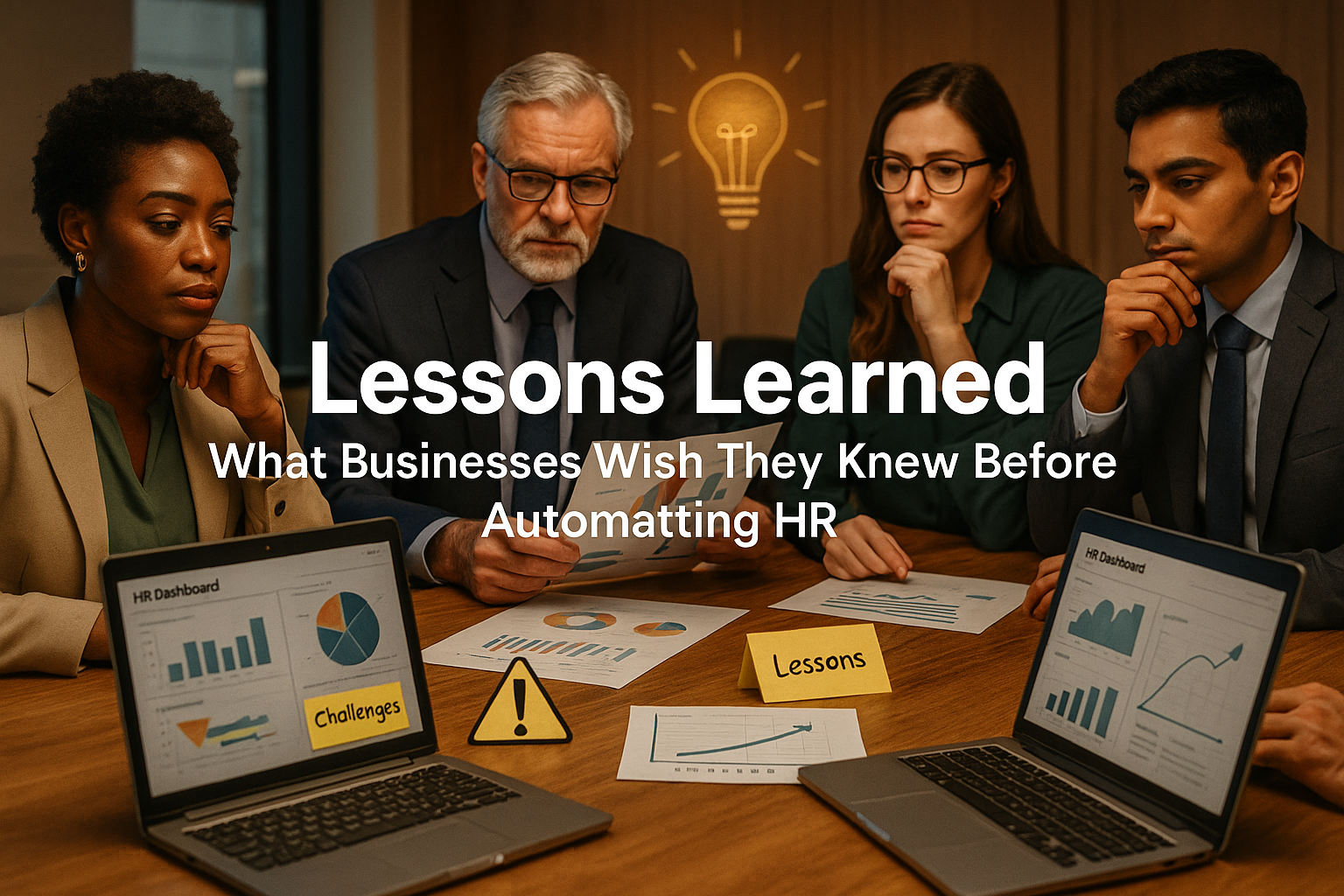Your basket is empty
Already have an account? Log in to check out faster.
Already have an account? Log in to check out faster.

The promise of HR automation is compelling: streamlined processes, reduced errors, and freed-up time for strategic initiatives. Yet many organizations discover that the path to successful automation is fraught with unexpected challenges. A recent Deloitte survey revealed that 58% of HR professionals spend more than half their week on administrative tasks, driving the urgent need for automation. However, industry data shows that nearly 60% of HR technology implementations face significant hurdles or fail to meet expectations.
One of the most common — and costly — mistakes organizations make during HR tech rollouts is assuming that employees will figure out how to use the tools without formal training. Companies often budget for software costs but underestimate the substantial investment required for comprehensive training programs.
Real-World Example: A 500-employee manufacturing company allocated $50,000 for their new HRIS system but only $5,000 for training. Six months post-implementation, adoption rates remained below 40%, forcing them to invest an additional $25,000 in intensive training programs to achieve meaningful utilization.

Beyond technical training, successful automation requires a fundamental shift in organizational culture. The key lessons learned from industry leaders emphasize the importance of aligning automation initiatives with clearly defined business goals and ensuring strong change management practices throughout the implementation process.
Some HR automation software is specialized, with features focused on specific processes. As a result, it can be difficult to integrate the products into the organization's IT infrastructure. Many businesses discover that their existing systems don't communicate seamlessly with new automation tools, requiring expensive middleware or system overhauls.
Case Study: A growing tech startup implemented separate automation tools for payroll, performance management, and recruitment. The lack of integration created data silos, requiring manual data transfers that defeated the automation purpose. They eventually invested in a unified platform, doubling their initial budget.
HR software collects a significant amount of sensitive data. Organizations might not have clarity on how the data is stored, leaving them vulnerable to data breaches and regulatory fines. Companies often focus on functionality while neglecting crucial security considerations.

The biggest lesson many organizations learn is that automation should enhance human interaction, not eliminate it. Companies that automate everything risk losing the personal touch that defines effective HR management.
Example: A retail chain automated their entire performance review process, including feedback collection and goal setting. Employee satisfaction scores dropped 25% as staff felt disconnected from managers. The company had to reintroduce human touchpoints while maintaining automated administrative functions.
According to research, 36 percent of businesses experience a lack of technology that automates and organizes certain HR processes, often due to employee resistance rather than technical limitations. Successful implementations require comprehensive change management strategies.
Industry leaders recommend beginning with high-impact, low-risk processes before expanding automation across all HR functions. For many, when it comes to HR automation benefits, highly manual tasks are the lowest-hanging fruit.
Successful Approach: A professional services firm started by automating only their leave management system. After achieving 95% adoption and measurable time savings, they gradually expanded to payroll, onboarding, and performance management over 18 months.
Industry leaders highlight the value of leveraging data analytics to gain insights into the effectiveness of automated processes and to make informed decisions that drive continuous improvement. Regular assessment ensures automation delivers expected benefits.
Most businesses underestimate the time required to see meaningful returns on automation investments. According to a study by the Aberdeen Group, organizations that utilize HR automation experience a 16% reduction in operational costs annually, but these benefits typically materialize over 12-18 months, not immediately.
While cost reduction is important, the most successful implementations focus on broader metrics including employee satisfaction, compliance improvements, and strategic capability development.
HR tasks multiply as companies scale, but automation ensures they don't become bottlenecks. Choose solutions that can grow with your organization rather than requiring complete overhauls as you expand.
The Global Human Capital Trends library found that 38 percent of businesses in 140 countries expect complete deployment of AI and automation over the next five years. Consider how your current automation strategy aligns with emerging AI capabilities.
Before You Begin:
During Implementation:
Post-Implementation:

HR automation transformation is not just a technological upgrade—it's a strategic business decision that requires careful planning, adequate investment, and ongoing commitment. Automating HR activities increases productivity and efficiency across the business. This allows HR teams to focus on strategic tasks and advocate for employees through culture building, coherent communication, and effective people practices.
The organizations that succeed are those that view automation as an enhancement to human capabilities rather than a replacement for human judgment. By learning from the experiences of others and approaching implementation with realistic expectations, businesses can avoid common pitfalls and achieve the transformative benefits that HR automation promises.
Success in HR automation isn't about having the most advanced technology—it's about implementing the right technology in the right way, with the right support, and the right expectations. The lessons learned by industry pioneers can guide your organization toward a smoother, more successful automation journey.

Don’t miss this opportunity to upgrade your HR operations and join the growing list of businesses in Sri Lanka achieving success with GalleryHR.
GalleryHR is committed to helping Sri Lankan businesses thrive with smarter, more efficient HR solutions. Partner with us today and experience the difference.
Join our empire today!































0 comments